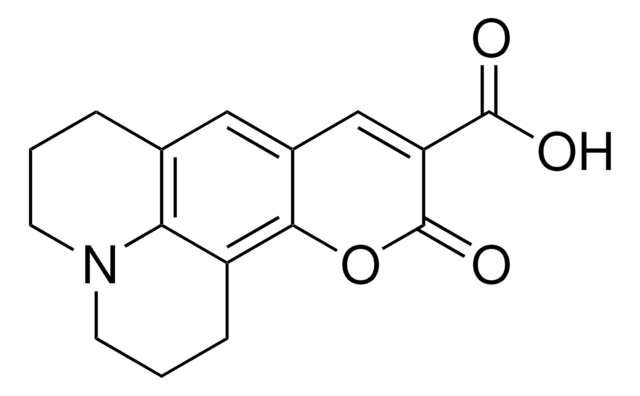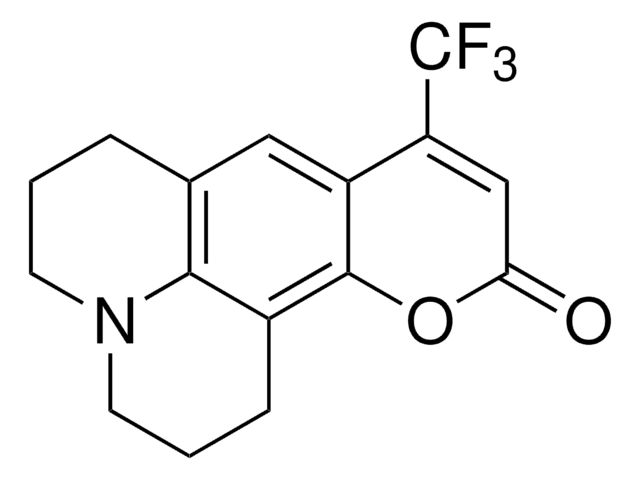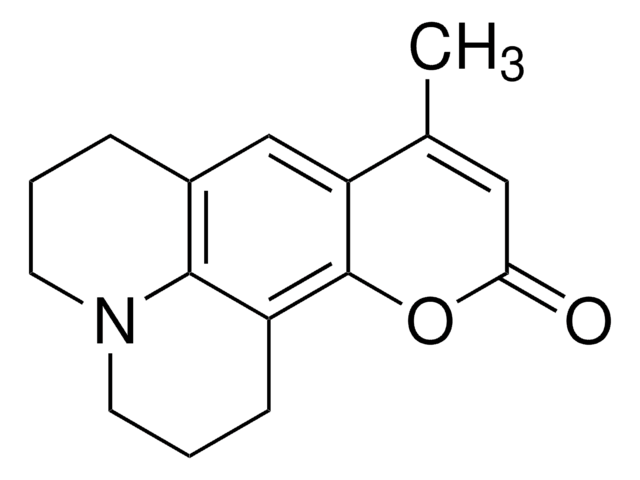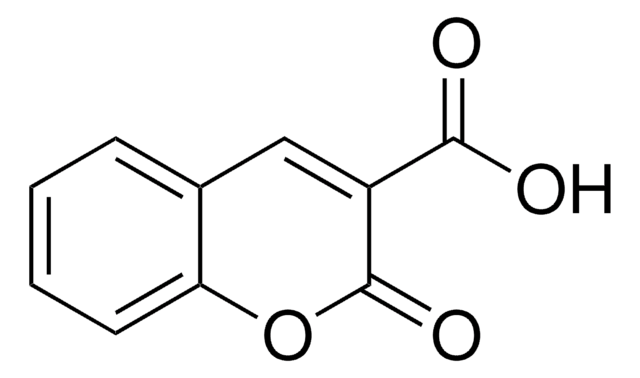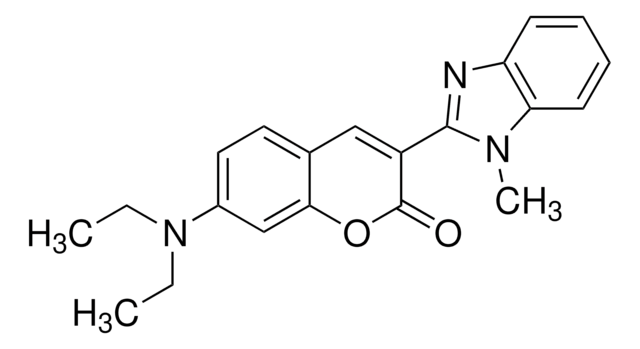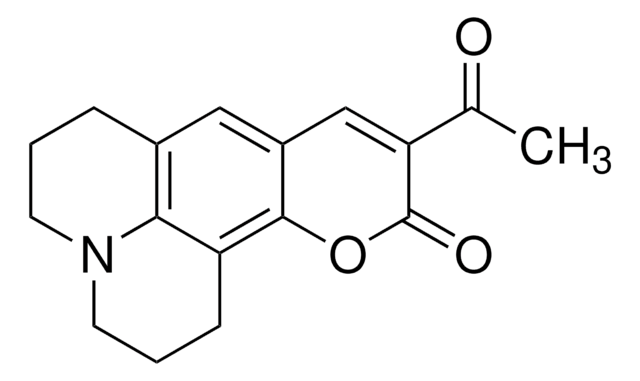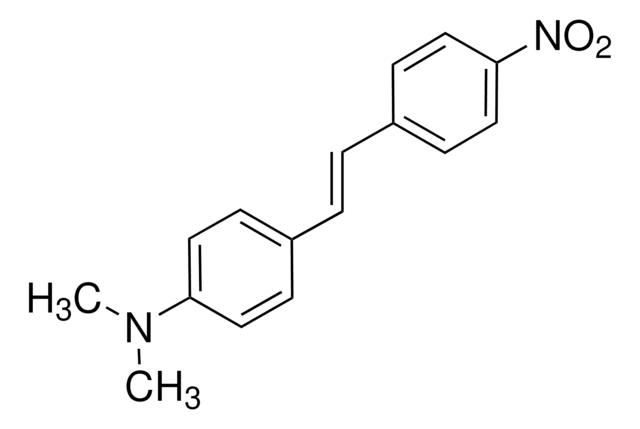392995
Coumarin 314
Dye content 97 %
Synonym(s):
2,3,5,6-1H,4H-Tetrahydro-9-carbethoxyquinolizino-[9,9a,1-gh]coumarin, Coumarin 504
About This Item
Recommended Products
form
solid
composition
Dye content, 97%
mp
140-144 °C (lit.)
146.22-147.36 °C (lit.)
λmax
436 nm
437 nm in ethanol
ε (extinction coefficient)
≥39000 at 389-401 nm in ethanol at 0.01 g/L
application(s)
diagnostic assay manufacturing
hematology
histology
storage temp.
room temp
SMILES string
CCOC(=O)C1=Cc2cc3CCCN4CCCc(c2OC1=O)c34
InChI
1S/C18H19NO4/c1-2-22-17(20)14-10-12-9-11-5-3-7-19-8-4-6-13(15(11)19)16(12)23-18(14)21/h9-10H,2-8H2,1H3
InChI key
VMJKUPWQKZFFCX-UHFFFAOYSA-N
Looking for similar products? Visit Product Comparison Guide
Application
Storage Class Code
11 - Combustible Solids
WGK
WGK 3
Flash Point(F)
Not applicable
Flash Point(C)
Not applicable
Personal Protective Equipment
Choose from one of the most recent versions:
Already Own This Product?
Find documentation for the products that you have recently purchased in the Document Library.
Customers Also Viewed
Our team of scientists has experience in all areas of research including Life Science, Material Science, Chemical Synthesis, Chromatography, Analytical and many others.
Contact Technical Service